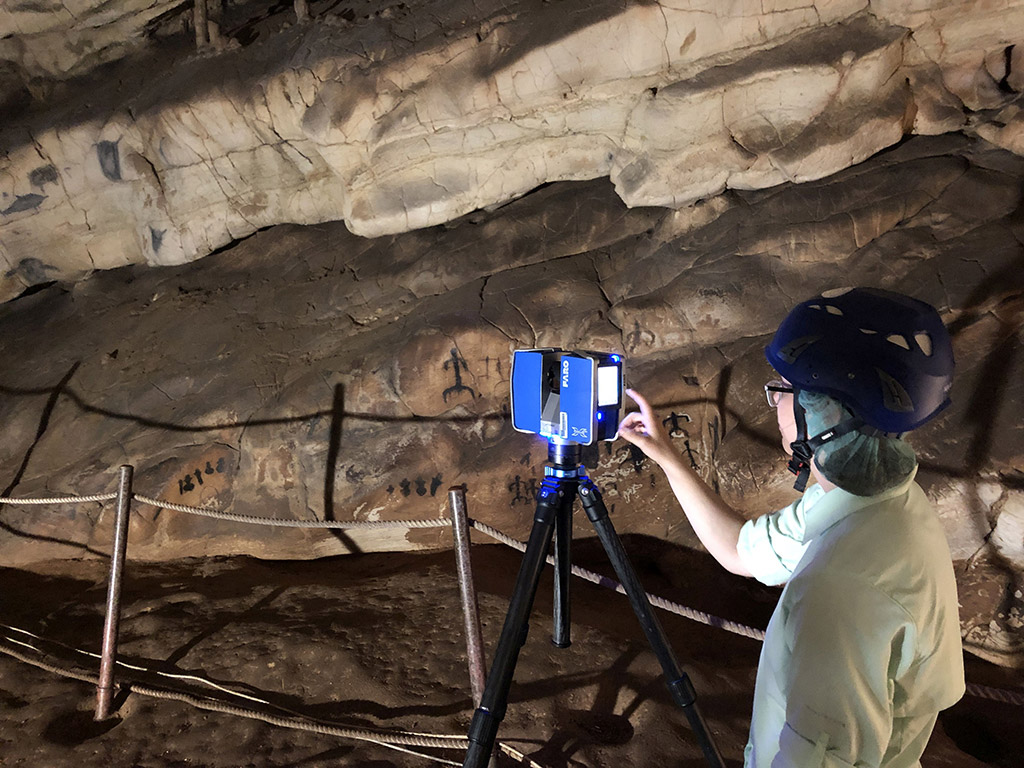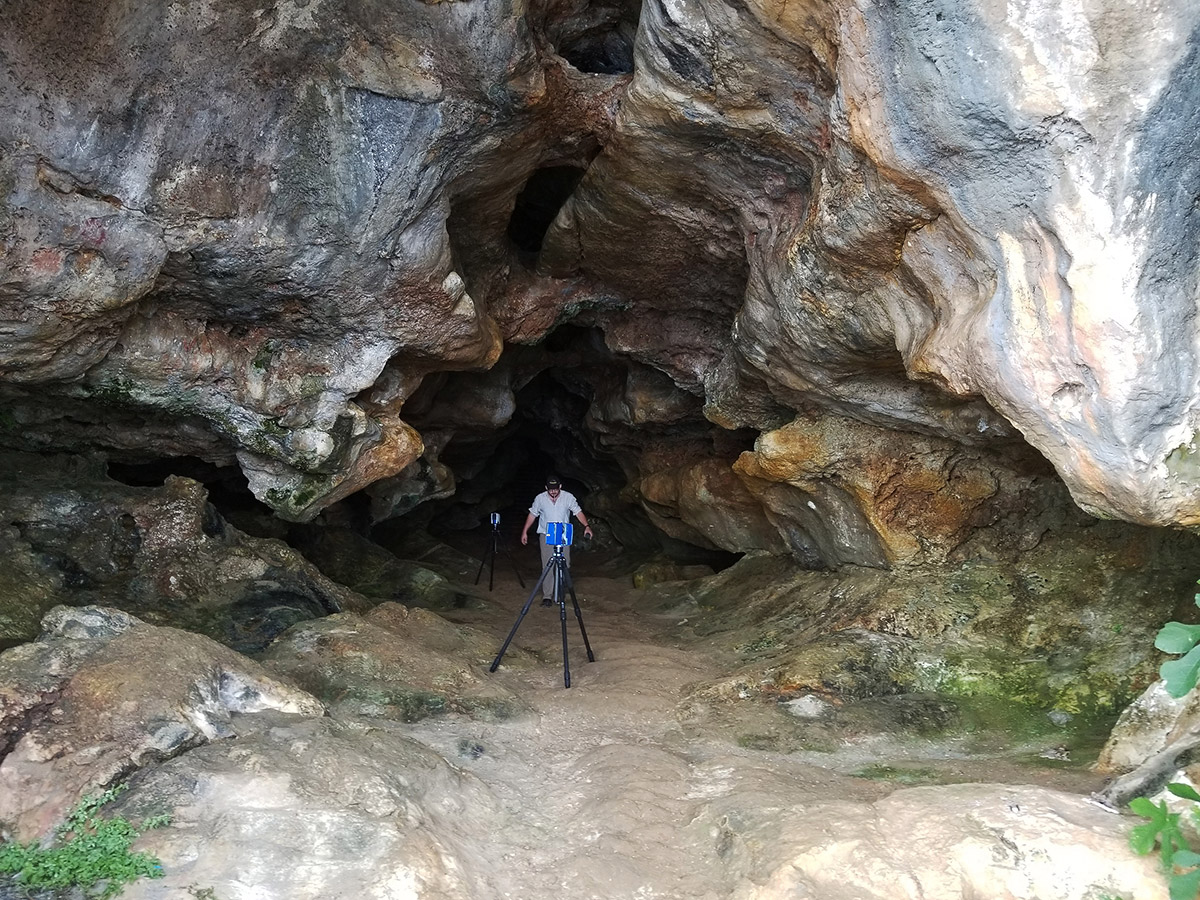Introduction
The documentation, interpretation and dissemination of ancient iconography is one of the most challenging tasks that scholars in archaeology, art history and anthropology face in their quest to reconstruct the past and communicate it to the global public. The visual images and symbols in works of art such as cave paintings, frescoes and mosaics are snapshots of the ancient world that reveal hidden aspects of daily life, and depict scenes from ancient mythological stories, some of which are absent from the written sources. Yet petroglyphs with their millennia-old carved lines, frescoes with pigments naturally subject to fade, and mosaic floors prone to deterioration from being stepped on for centuries are rapidly disappearing vestiges of the past. They are threatened from overtourism, artificial lighting and environmental degradation, among many other factors.
In 2019, an interdisciplinary team from the University of South Florida’s (USF) Institute for Digital Exploration (IDEx), directed by Dr. Davide Tanasi, and USF’s Access 3D Lab, directed by Dr. Laura Harrison, embarked on a collaborative research project in Sicily and Malta. The project focused on the virtualization of ancient iconography in two prehistoric caves and two Roman imperial dwellings spanning 18,000 years.
With 3D scanning, the project created a digital life for four remarkable heritage sites by virtualizing endangered and inaccessible locations, pioneering a new method of visual analysis based on high-resolution digital scans of ancient artworks, and implementing sustainable heritage management practices by training local site managers on how to monitor sites and plan conservation work using digital tools. This open, collaborative approach to digital scholarship demonstrates the value of bringing together two research labs at USF in pursuit of groundbreaking research.
The project combines IDEx’s technical proficiency in virtualization and subject area expertise in the archaeology and history of Sicily and Malta with Access 3D Lab’s goal of incubating and supporting transformative research in the digital realm. By offering access to advanced 3D instrumentation, training, project consultations and collaboration, Access 3D Lab is working to create a “digital innovation ecosystem” at USF. Like a biological ecosystem, it consists of multiple interdependent elements that interact with each other and each play a role in the advancement of digital scholarship.
On a daily basis, this work involves supporting projects that bring together creative applications of digital tools, rigorous scholarship, collaborative research, digital pedagogies, and community engagement, while staying abreast of the latest technological advancements in the field of 3D virtualization.
Paleolithic Cave Art in Sicily and Malta
In Sicily and Malta, Dr. Davide Tanasi and his team documented two labyrinth cave sites and their barely visible rock art carvings and paintings with highly precise terrestrial laser scanners and photogrammetry. The Genovese Cave on the islet of Levanzo in the Aegates Islands of western Sicily has prehistoric engravings and painted art with the largest and most complex compositions in the south-central Mediterranean.
One remarkable composition that dates to the final phase of Late Paleolithic (17,000
to 12,000 years before present) depicts animal species typical of the end of the last
ice age that are now extinct, such as Cervus Elaphus (deer), Bos Primigenius (bull)
and Equus Asinus Hidruntinus (a short horse).
These paleolithic animals are accompanied by an enigmatic tall bearded human figure.
A second composition in the Genovese Cave dates to the final phase of the Neolithic
(end of the 5th millennium BCE) and shows fourteen painted human figures. These figures
are surrounded by animals and by an enthroned character with a tiara shaped cap; as
a result, they have been interpreted as idols. By virtualizing those scenes with terrestrial
laser scanners, this project addresses a pressing need to document and preserve these
unique and enigmatic artistic expressions.

3D scanning Genovse Cave at Levanzo (Sicily)
In the late 1980s, paintings were discovered beneath stalagmitic sheets of calcium carbonate in the remote cave site of Ghar Hasan, on the southern coast of Malta. Figures in these paintings bear a strong resemblance to the Neolithic figures discovered in the Genovese Cave on Sicily. The paintings in Ghar Hasan also depict unusual animals, including a rare image of an elephant.
At both Ghar Hasan and the Genovese Cave, the effect of the salty sea air, the combination of heat and humidity, the strong sources of artificial light and the escalation of unregulated tourism are contributing to the decay of these unique images. The availability of the 3D digital replicas will prove to be extremely valuable if the managing institutions decide to close the sites to the public.
Roman Mosaics in Sicily
Encompassing over 6,000 square meters, the 4th century CE Roman Villa of Caddeddi on the Tellaro River at Noto is one of the largest villas in Sicily. This elite residence is constructed on two terraces on the gentle slope of a hill. At the center of the villa is a large open courtyard (peristyle) surrounded by a colonnade. The rooms surrounding the colonnade contain exquisite mosaic floors, for which Villa of Caddeddi is world famous.
The mosaics depict events that range from blood-soaked and adventurous hunting expeditions in Africa and to religious rites in honor of Bacchus, god of wine and pleasure.
Perhaps the most significant mosaic scene depicts what appears to be lost episode from the Homeric poem Iliad. This mosaic depicts the payment of the ransom by the King of Troy, Priam, to Achilles to have returned the corpse of his son Hector, in front of the Achaean hero Diomedes, with a hoard of golden vessels. Hector himself appears dead on two of the dishes, which are depicted on a massive scale. The benefits of approaching the visual analysis of these mosaic artworks in a digital environment are countless. High resolution 3D models allow researchers to zoom in on the images at quasi-microscopic level to taking digital measurements of single mosaic tiles, or tesserae, which enable the digital reconstruction of ancient iconographies with an unprecedented level of precision and detail.
Digital documentation methods can also produce digital elevation models of the mosaic floors to predict future episodes of swelling and degradation. All of this is possible without harming the original, in situ artworks, and the monitoring can be done remotely, from any part of the world.
The Domus of Rabat is the most splendid Roman mansion of Malta. Built with very fine mosaic floors in a Late Hellenistic style, toward the mid-first century CE, it must have been occupied by a person of high political standing who undertook the expense of adorning it with a cycle of fine portrait statues representing the emperor Claudius and members of his family. The beautiful multicolored frescoes decorate the walls and pair with the mosaics of the five rooms. They depict subject matter with a rich variety of themes ranging from the theater world, to the personification of the four seasons, to a remarkable scene of maenads punishing a satyr for his insolence.
The Maltese governmental institution managing the site worked elbow-to-elbow with USF scholars and received formal training in the application of the digital technologies and the curation of the digital data. These activities are the foundation of a formal future agreement between USF and HM for technology transfer in digital heritage.
Building these types of collaborations that link USF scholars and technology resources with local heritage managers encourages the growth of an open, engaged, international heritage community that is equipped to meet future challenges and agile enough to implement local changes swiftly in order to protect, preserve and share global cultural heritage.
Creating A Digital Innovation Ecosystem
Together, the multiple projects undertaken by USF’s IDEx Lab and Access 3D Lab in Sicily and Malta advance digital scholarship on Mediterranean history and prehistory by focusing on 3D virtualization, pioneering a new form of visual analysis, and implementing sustainable heritage management practices. The partnership between the two labs demonstrates that open collaboration and access to cutting edge technologies propels innovative digitally driven research and promotes an appreciation of cultural heritage as a human right on a global scale.
